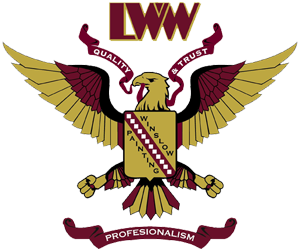Painting can be a fun and inviting way to spruce things up when our homes or businesses need a facelift. I always get excited when I get to pick out a new color scheme for my next project. It’s not always as easy as slapping on a new coat of paint, sometimes extra surface preparation is needed due to old paint cracking or chipping. Have you ever been working on a painting project and wondered why paint does this? L.W. Winslow Painting, Inc would like to explain the why’s and give you some helpful tips for your next project!
Why Does Paint Bubble?
Why does paint bubble? Well it can be caused due to excessive heat, moisture or both. If there was an oil-based or alkyd-based paint used over a latex paint that can also be a cause for bubbling. Lack of proper surface preparation before painting, exposing a latex based paint to moisture shortly after painting, or painting over a damp, excessively hot, or dirty surface can cause this to happen as well.
How to Fix Paint Bubbles on Wall
First you will want to identify the cause of the bubbling. Getting an answer as to what caused the blistering in the first place will help to avoid the issue from recurring. If the paint has been damaged down to the substrate then you may have a water issue somewhere that will need to be addressed before moving onto the next step. A lot of times, seeing this happen is because moisture has become trapped between the paint and the structure causing the paint to lift and “bubble”. After the source has been identified and fixed, you will want to remove the old blistered paint by using a wire brush to scrape the paint off. After the majority has been removed you will need to use sandpaper to sand the area until you have a smooth, even, clean and dry surface to work with. Repair any caulking that has been damaged then coat with primer/sealer and allow to completely dry before applying a quality paint. Avoid painting when humidity levels are high, or it is excessively hot. Plan the time you are going to paint so you can allow the paint sufficient time to dry before it is exposed to moisture. In areas where humidity levels are high, consider installing vents or exhaust fans to lower the level of moisture in the problem area.
What Causes Cracking or Peeling Paint?
Why does this happen? Inadequate surface preparation or not applying a primer before painting a wooden surface can cause cracking to occur. As certain paints age, it becomes crispy and hard as it loses its ability to conform to the changing heat and humidity levels. The paint essentially loses its ability to expand and contract causing it to break apart. Over-thinning or over-spreading the paint can also cause this to happen.
How to Fix Cracked or Peeling Paint
First, remove all the old loose peeling or flaking paint with a wire brush, scrape off as much as you can to make the sanding process easier. Be sure to sand the area until it is smooth, and you have an even surface to work on. If the paint is ruined through multiple layers, you may need to use a bit of spackle to create an even surface. If you are painting a wooden or plastered surface, be sure to use a quality primer to prep the area for painting. Test paint a small area first to be sure the paint is going to adhere well. After the paint dries and you have verified it is adhering to standards. Using a quality paint, you will apply the coatings as directed while using the recommended thinning rate directed by the manufacturer.
Painting Services & More in Amagansett, Bridgehampton, East Hampton, Hampton Bays, Montauk, North Haven, North Sea, Noyack, Quogue, Shelter Island, Sag Harbor, Sagaponack, Shinnecock Hills, Southampton, Springs, Wainscott, Watermill, Westhampton, West Hampton Beach, New York
L.W. Winslow Painting, Inc can make this process easier for you by taking the trouble out of the ordeal. Repairing damaged paint can be a real project. Leaving harder jobs like this to us will save you time, effort and money in the long run. Contact us today!

